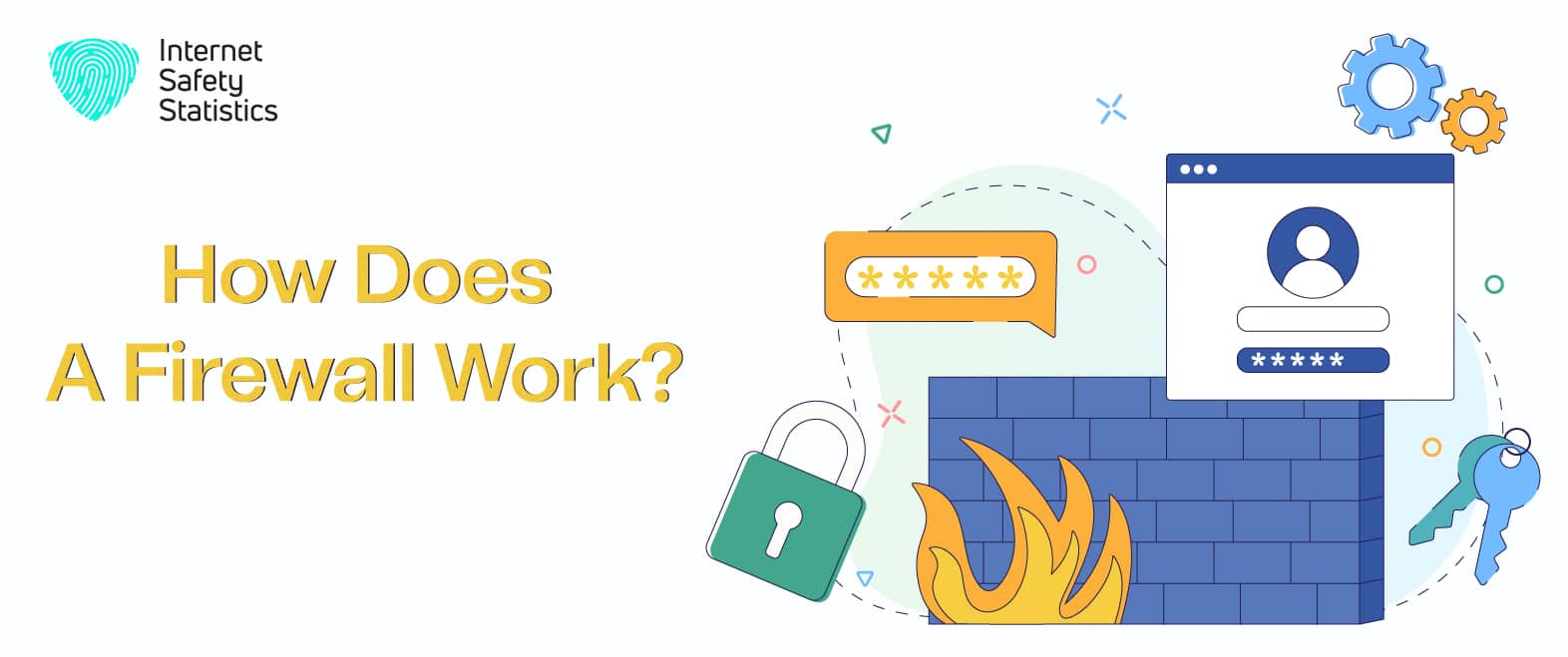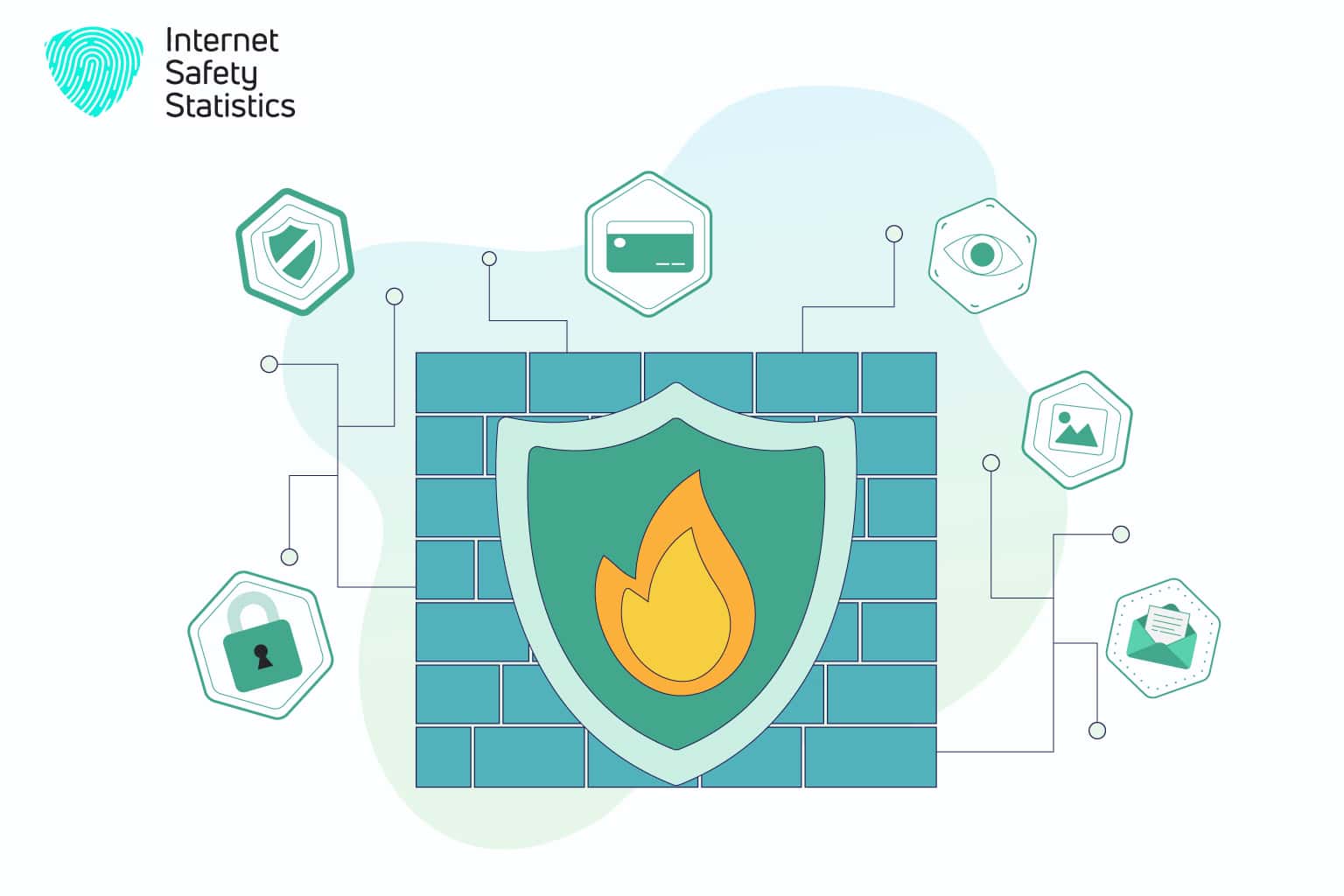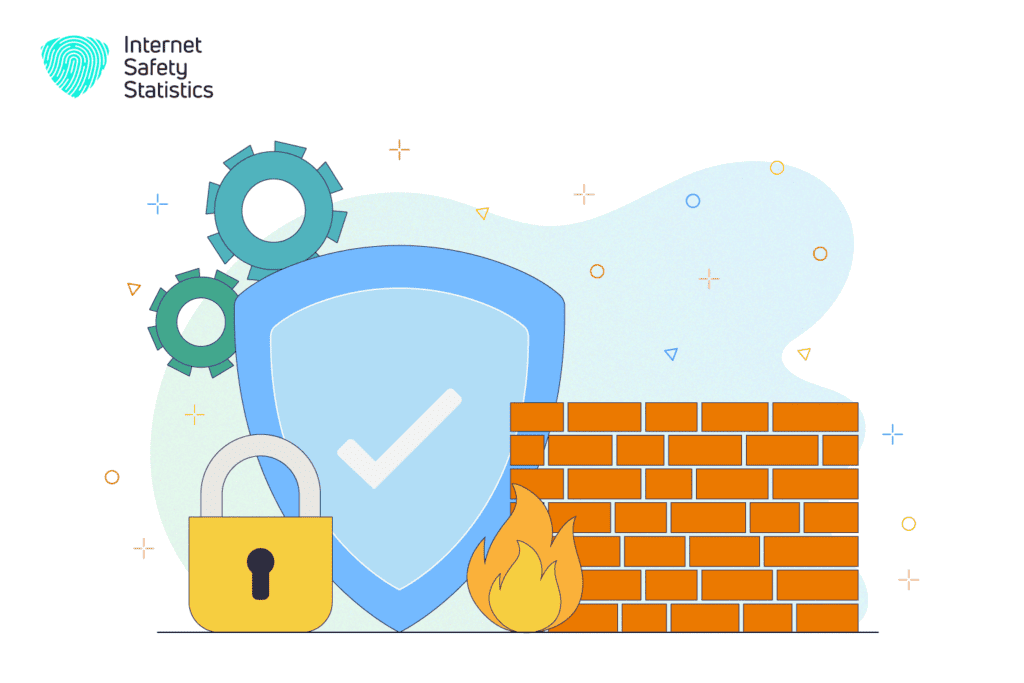
As we are witnessing today a digital revolution, and with all the data being shared and stored online, our computers are more vulnerable to cyberattacks. This is where firewalls come into play, acting as a vital line of defence while guarding our devices and networks against unauthorised access and suspicious malware.
If the data is safe, like an email from a friend, the firewall lets it through. However, if it’s fishy, like a virus, the firewall blocks it from entering. Hence, using firewalls to secure our personal, financial, and business information has become critical. So, how does a firewall work, and what are its main types? Let’s dig in.
How Does a Firewall Work?
A firewall works like a security checkpoint for data trying to enter or leave your computer or network. When data, broken down into small pieces called packets, attempts to pass through, the firewall checks these packets against a set of rules. These rules determine what kind of data is allowed or not. For example, a rule might block a certain website or allow emails through.
If the data follows the rules, the firewall lets it pass. If not, the firewall blocks it. This way, harmful or suspicious data like viruses or hacking attempts are stopped before they can do any damage. All types of firewall security systems use these rules to keep your network secure.
What Are The Three Main Types of Firewalls?

There are three main types of firewalls: hardware, software, and cloud-based firewalls. A hardware firewall is a physical device that sits between your network and the outside world. It’s like a security gate for all the devices connected to your network, like your computer, smartphone, and smart TV.
Cloud-based firewalls are security systems hosted in the cloud, making them easy to manage and scale as your needs change. They offer centralised protection for multiple devices and networks, all without requiring any physical hardware on-site. These firewalls are especially useful for businesses with remote or distributed teams. By filtering traffic directly in the cloud, they provide robust security against cyber threats while reducing the burden on local resources.
On the other hand, a software firewall is installed directly on your computer. It’s more like a personal bodyguard that specifically protects your device. Some people use both types for double protection. Besides these, there are specialised kinds like stateful, packet-filtering, and application-layer firewalls that offer different levels of security. Each type has its own pros and cons, but all aim to keep your data safe.
What Are The Two Main Types of Hardware Firewalls?

Hardware firewalls come in different forms to meet various needs, the most common being the standalone and the Unified Threat Management (UTM) types. Standalone Firewalls are usually set up at the network’s edge, checking and ensuring the safety of both incoming and outgoing traffic. Thus providing ultimate security for your network against external threats.
Standalone firewalls function by inspecting data packets in accordance with a set of rules. They allow or block traffic based on source, destination IP addresses, ports, or protocols. These are often used in large enterprises or data centres where granular control over network traffic is needed.
What Are the Pros and Cons of Standalone Firewalls?
- Pros: Standalone firewalls provide robust protection and are the best option for large networks. They are manageable and work separately from the operating systems and applications of the devices they protect. This isolation makes them less vulnerable to attacks.
- Cons: They can be pricey and may require specialised knowledge to configure and manage effectively.
The second type of hardware firewall, which is the most common, is the Unified Threat Management (UTM) Firewall. UTMs are favoured by admins as they have multiple functions that do not only include firewall protection but also antivirus scanning, data loss prevention, spam filtering, intrusion detection and prevention systems (IDPS). UTMs are generally best suited for small to medium-sized businesses or remote branch offices that may not have specialised IT security staff.
What Are the Pros and Cons of UTMs Firewall?
- Pros: UTMs offer a comprehensive, all-in-one security solution, making them easier to manage. They are generally more user-friendly and are ideal for small to medium-sized businesses that may not have specialised IT staff.
- Cons: The multi-functional nature can sometimes result in reduced performance, as the device has to handle multiple tasks simultaneously. Also, they may be less customisable than standalone firewalls.
Choosing between these types of hardware firewalls depends on your specific needs, the size and complexity of your network, and your available resources. Both types aim to provide robust security, but they differ in functionality, manageability, and cost.
What Are The Types of Cloud-based Firewalls?
Cloud-based firewalls are the same security systems that protect your network against cyber threats but are hosted in the cloud rather than on-premise. They are installed on-site and managed remotely, offering a centralised approach to network security. Cloud-based firewalls come in various types, including Web Application Firewalls (WAFs), Next-Generation Firewalls (NGFWs), and Firewall-as-a-Service (FWaaS), each offering different levels of protection and functionality to suit specific needs.
The advantage of cloud-based firewalls is their scalability and flexibility. As your network grows, the firewall can easily adapt without the need for additional hardware or manual configuration. They are also easier to manage across multiple locations, making them ideal for businesses with distributed teams or remote work setups. Overall, cloud-based firewalls provide a modern, adaptable security solution that complements today’s increasingly cloud-centric computing environments.
What Are Web Application Firewalls (WAF)? Pros And Cons?
WAFs are one of the main types of cloud-based firewall systems designed to protect web applications by inspecting HTTP traffic between a web application and the internet. They are specialised firewalls designed to protect web applications from various online threats.
- Pros: They excel in shielding web applications from specific threats like SQL injection and cross-site scripting (XSS). Because they are based in the cloud, deployment and scaling are straightforward and convenient.
- Cons: WAFs are specialised and don’t offer broader network protection. They can also be expensive and may produce false positives.
What Are Next-Generation Firewalls (NGFW)? Pros And Cons?
NGFWs are one of the main types of cloud-based firewalls. They are more advanced than traditional firewalls, providing features like intrusion prevention, application control, and deep packet inspection. They offer a more comprehensive look into network traffic, allowing for finer-grained security measures. Their advanced capabilities make them particularly useful for organisations with complex security needs.
- Pros: NGFWs offer a more comprehensive security framework, and the fact that they are cloud-based allows for seamless updates and scalability. NGFWs are also frequently updated to defend against emerging threats, making them a dynamic security solution. These firewalls can identify and control applications, users, and devices, making them more adaptable to complex network environments.
- Cons: These can be complex to manage and may require a learning curve. Costs can also accumulate due to additional features.
What Is Firewall-as-a-Service (FWaaS)? Pros And Cons?
Firewall-as-a-Service (FWaaS) is an outsourced service for network security. This type of firewall is easily scalable, adapting to the growing needs of a business without requiring manual configuration. By being cloud-hosted, FWaaS ensures consistent and up-to-date protection against a large number of cyber threats.
- Pros: FWaaS offers centralised management and the ability to enforce uniform policies across multiple locations and networks. Its cloud-based nature makes it easily scalable and reduces the need for on-site hardware.
- Cons: Dependence on cloud connectivity may raise concerns about latency and potential downtime. Also, the service might not be as customisable as an on-site solution.
Choosing among these cloud-based firewall types involves balancing factors like specific security needs, ease of management, and budget considerations. Each has its advantages and drawbacks, but all aim to provide robust, scalable security solutions.
What Are Software Firewalls?
Firewall software is installed directly on individual computers or servers and controls network traffic to and from that machine. They are particularly useful for mobile workers and those frequently connecting to different networks, as the protection stays with the device itself. Unlike hardware firewalls, they allow for individualised settings on each computer, providing a level of granularity in control. They are ideal for detecting and blocking malware that attempts to exploit application-level vulnerabilities.
Windows Firewall
Integrated into Microsoft Windows operating systems, Windows Firewall filters both incoming and outgoing traffic based on user-defined rules. It works closely with the operating system to filter traffic at the packet level. Although they are less configurable than some third-party solutions and may lack advanced features, they are easy to use, have no additional cost for Windows users, and are moderately robust for basic security needs.
Norton Firewall
Part of the Norton antivirus suite, this firewall is aimed at consumers and small businesses. Besides basic packet filtering, it provides intrusion prevention and can inspect encrypted SSL data. Norton Firewall is considered highly configurable, offering advanced features and integrating well with other Norton security tools. It is worth mentioning that it requires a subscription and could be rather sophisticated for basic security needs.
McAfee Firewall
McAfee Firewall is part of the McAfee Total Protection suite, aimed at both individuals and businesses. It provides outbound and inbound firewall protection, monitors for suspicious activities, and blocks unauthorised access. While it offers robust features, comes with a user-friendly interface and integrates well with McAfee antivirus, it is subscription-based and can be resource-intensive on older systems.
Which Firewall Is The Most Secure?

According to Digital.com, proxy servers are the best. They act as intermediaries between a user’s computer and the internet, forwarding requests for web pages or files. When you request a website through a proxy server, it fetches the site for you, essentially serving as a gateway between you and the internet.
They can provide extra security and privacy measures by masking your IP address, making it more difficult for third parties to track you. They can also be used for content filtering and bypassing geographic restrictions on websites. However, proxy servers have their own share of drawbacks. For example, free proxies often come with slow speeds, unreliable uptime, and questionable security standards. Paid services can be costly as well.
In the rapidly evolving landscape of cyber threats, firewalls serve as an indispensable line of defence for both individual users and organisations. Whether hardware-based, software-based, or cloud-based, each type of firewall offers unique advantages tailored to specific needs and environments. Investing in the right firewall solution is crucial for safeguarding your data, privacy, and overall digital well-being.
